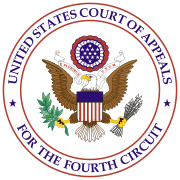Simkins v. Moses H. Cone Memorial Hospital
| Simkins v. Cone | |
|---|---|
 | |
| Court | United States Court of Appeals for the Fourth Circuit |
| Full case name | Simkins v. Moses H. Cone Memorial Hospital |
| Decided | November 1, 1963 |
| Citation(s) | 2323 F.2d 959 (4th Cir. 1963) |
| Court membership | |
| Judge(s) sitting | SOBELOFF, Chief Judge, and HAYNSWORTH, BOREMAN, BRYAN and J. SPENCER BELL sitting en banc |
Simkins v. Cone, 323 F.2d 959 (1963), was a federal case, reaching the Fourth Circuit Court of Appeals, which held that "separate but equal" racial segregation in publicly funded hospitals was a violation of equal protection under the United States Constitution.
Background
George Simkins, Jr. was a dentist and NAACP leader in Greensboro, North Carolina. One of his patients, an African-American person, developed an abscessed tooth and Simkins felt that the patient required medical treatment, but none of the local hospitals that would accept African-American patients had space for the patient. With the assistance of the NAACP and other medical professionals in the area, Simkins filed suit, arguing that because the Moses H. Cone Memorial Hospital and Wesley Long Hospital had received $2.8 million through the Hill–Burton Act that they were subject to the Constitutional guarantee of equal protection. The suit was filed in February 1962.[1][2]
At district court, the suit was dismissed, the court finding that there was no involvement of the state or federal government. This ruling was appealed to the Fourth Circuit Court of Appeals in November 1963.[2]
Opinion of the Court
In a 3-2 decision, the Fourth Circuit overturned the district ruling, looking to whether the hospitals and the government were so intertwined by funding and law that the hospitals' "activities are also the activities of those governments and performed under their aegis without the private body necessarily becoming either their instrumentality or their agent in a struct sense."[3] The Court held that to be the case.
The Court then found the provision for segregated, "separate but equal" facilities to be unconstitutional, and struck down that portion of the Hill–Burton Act.
A dissent, authored by the Judge Haynsworth and joined by Judge Boreman, argued that the hospitals' operations involved no "state action", noting the history of the hospitals had preceded the creation of Hill–Burton.[3][4]
The case was appealed to the Supreme Court, who denied certiorari. As a result, the Appeals court ruling stood, but was only precedent within the jurisdiction of the Fourth Circuit—Maryland, North Carolina, South Carolina, Virginia and West Virginia.[5]
Subsequent developments
In 1964, Title VI of the Civil Rights Act of 1964 banned discrimination on the basis of race, color, or national origin for any agency receiving state or federal funding.[6]
References
- ↑ Nelson, Alondra (2011). Body and Soul: The Black Panther Party and the Fight Against Medical Discrimination. University of Minnesota Press. pp. 39–. ISBN 9781452933221. Retrieved 7 July 2014.
- 1 2 Wisconsin-Madison, Vanessa Northington Gamble Associate Professor of the History of Medicine and Family Medicine at the School of Medicine University of (1995-02-25). Making a Place for Ourselves : The Black Hospital Movement, 1920-1945: The Black Hospital Movement, 1920-1945. Oxford University Press, USA. pp. 188–. ISBN 9780195360066. Retrieved 7 July 2014.
- 1 2 Rossman, George; Richard B. Allen (April 1964). "What's New in the Law". ABA Journal. American Bar Association: 379–380.
- ↑ 4th circuit opinion at Leagle
- ↑ Reynolds, P. Preston (May 2004). "Professional and Hospital DISCRIMINATION and the US Court of Appeals Fourth Circuit 1956–1967". American Journal of Public Health. 94 (5): 710–720. doi:10.2105/ajph.94.5.710. PMC 1448322
 . PMID 15117685.
. PMID 15117685. - ↑ Richardson, Christopher M.; Luker, Ralph E. (2014-06-11). Historical Dictionary of the Civil Rights Movement. Rowman & Littlefield Publishers. pp. 412–. ISBN 9780810880375. Retrieved 7 July 2014.
Additional sources
- Reynolds, P. Preston (1997). "Hospitals and Civil Rights, 1945-1963: The Case of Simkins v Moses H. Cone Memorial Hospital". Annals of Internal Medicine. 126 (11): 898. doi:10.7326/0003-4819-126-11-199706010-00009. ISSN 0003-4819.